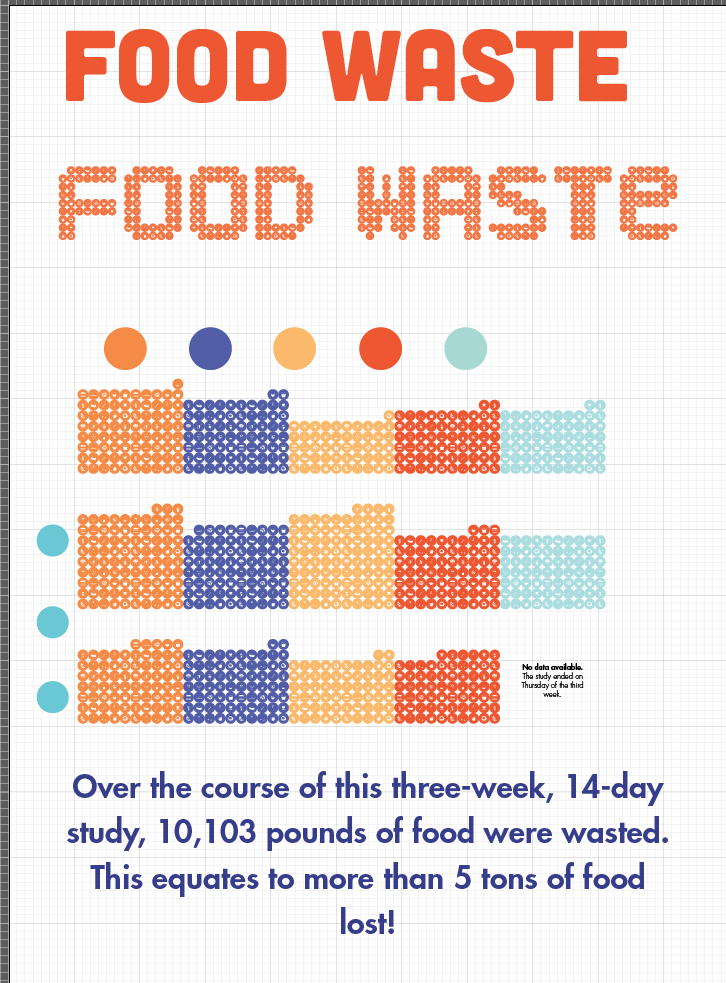
Next time your unfinished egg sandwich and untouched banana gets thrown out in the dining hall, it may get composted and end up enriching the soil in a local garden.
But students rarely think about what happens to food they toss out. Efforts to change that are underway, and the awareness is beginning to yield some interesting results.
A zero food waste initiative took place at Hasbrouck Dining Hall last semester from Nov. 4 to Nov. 21. This initiative was organized by the food waste study team, which consisted of staff from the Office of Campus Sustainability, Sodexo, SUNY New Paltz’s food vendor, Campus Auxiliary Services and a team of student food waste awareness educators.
This study was funded through a $2,000 grant the Office of Campus Sustainability received, according to New Paltz Sustainability Coordinator Lisa Mitten.
The study, which consisted of three different stages, was done to track how much food wasted per day in the dining hall, Mitten said.
The first week, when there was no intervention from the student food awareness educators, the rates of food waste were the lowest of the study period with 510 pounds.
The second week food waste signage posters and messages were placed on the napkin dispensers, which displayed statistics to educate the students. There was also a swimming pool filled with student’s food waste from their finished plates. The rate of food waste was at its highest with 941 pounds.
Finally, the third week with peer-to-peer interactions, and the food waste photo pledges, which said “Love Food, Hate Waste,“ “I’ll go back for seconds” and “I heart compost,” the rates ranged from 600 to 710 pounds.
Across campus, food waste is a much larger problem. February, the first full month of school since the study was done, resulted in an average of 1,193 pounds of food being wasted on campus per day. This number is more than every month in the past year besides February of 2013 (1,306 pounds) and November of 2013 (1,303 pounds).
Louis Herman, the director of resident dining at New Paltz, said the increase in food waste was a result of the students not being constantly educated on the issue.
“When we did the whole thing with the swimming pool people became aware of it,” Herman said. “As soon as you stop doing that people will revert back to their old habits, unfortunately.”
When the food is returned, Jackson said it is sorted by what’s compostable and what’s not compostable, and then gets placed in respective bins. At the end of the day Royal Carting, SUNY New Paltz’s food waste hauler, is responsible for picking up, weighing and submitting food waste weight reports to the campus. They bring the food waste to the Ulster County Resource Recovery Agency (UCRRA) in Kingston, where it gets composted.
Because of the high numbers, Jackson said Sodexo is going to be in contact with Mitten to help educate the campus to reduce food waste. Mitten oversees the campus efforts to enhance its sustainability and educate the campus on these issues.
“I would love to have zero food waste, but that’s not going to be an easy challenge,” Jackson said.
Herman said Sodexo’s never going to eliminate food waste completely, but they’re looking to reduce one percent of their food waste. He said this might not seem like a lot, but it adds up to a lot less food waste overall throughout all of Sodexo.
Mitten said she is working on a campaign that works to minimize the total amount of material used on campus as well as increase the diversion of materials from landfills to be reused, recycled or composted.
“I hope that going forward, a great portion of the campus’ food waste that current end up in landfill bins [will be] diverted to composting bins,” Mitten said.
